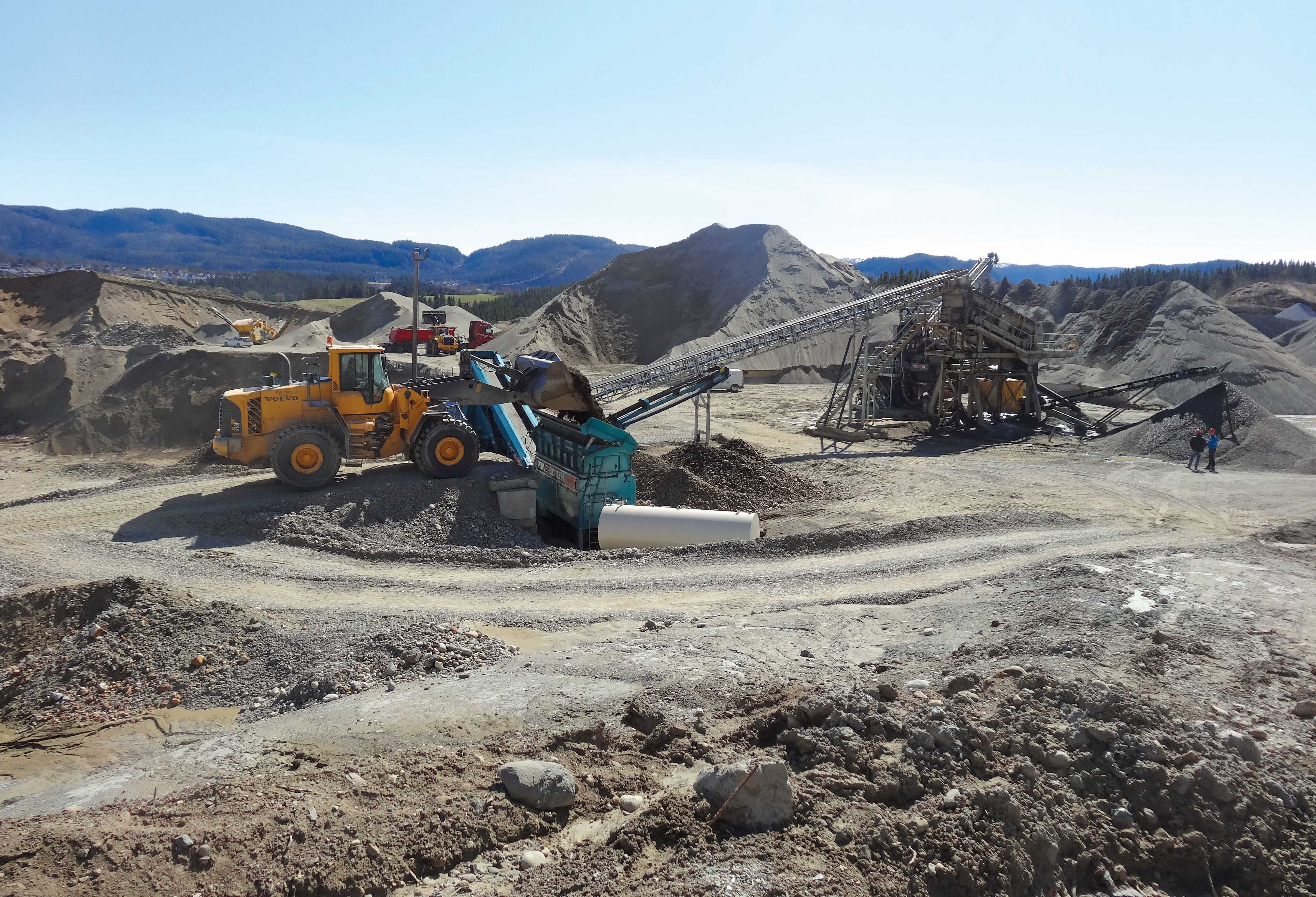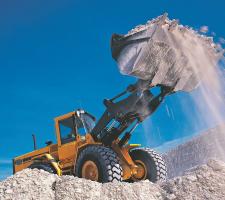
Chris Hansford, managing director of Hansford Sensors, explains how vibration monitoring can improve machine reliability and cut operating costs in the aggregates sector.
Despite the continuing economic volatility in many regions around the world, the overall demand for crushed rock, gravel and sand is steadily rising in line with increasing numbers of major infrastructure projects, population growth and rapid urbanisation. At the same time, aggregates companies are under growing pressure to maintain margins, in the face of higher extraction and processing costs, downward pressure to reduce the cost of construction projects, and the need to minimise environmental impacts.
Although it’s not always within the power of aggregates companies to influence these market forces, there is a variety of internal factors that can be equally damaging to operating margins, yet are within their direct control. For example, a major issue can be unscheduled machine downtime, caused by component wear or sudden failure. This directly impacts on productivity and profitability, yet is perhaps one of the simplest problems to fix.
There are a range of techniques for managing component wear and unscheduled machine downtime, but one of the most efficient and cost-effective methods is to implement predictive maintenance in the form of condition monitoring.
This means that instead of reacting to a problem once it occurs, operators proactively monitor the condition of machinery on a routine basis, completing any maintenance and repair duties based on the condition of components prior to failure. As a result, the efficiency of the equipment can be optimised, maintenance costs can be reduced and productivity can be improved.
Vibration monitoring has now become one of the key assets in the toolbox of those who are responsible for running a predictive maintenance programme on plant and equipment in the aggregates sector. Although its primary purpose is to prevent unscheduled downtime, in some circumstances the careful monitoring of vibration as an indicator of machine wear can enable the operating life of machinery to be extended beyond recommended maintenance intervals.
Vibration sensors, also known as accelerometers, are commonly used in equipment such as vibrating screens, crushers, conveyors, pumps, motors and gearboxes, where they monitor vibrations in rotating parts, including bearings, shafts and pulleys. A change in vibration levels indicates an increase in wear, imbalance or misalignment, with the degree and speed of change being directly proportional to the deterioration in the operation condition of the equipment being monitored.
This information allows engineers to take planned action to repair or replace failing and worn components. This approach to maintenance delivers a variety of benefits, especially when it comes to productivity. For example, the total cost of unscheduled downtime is estimated to be as much as 15 times that of a scheduled event. Minimising the unplanned downtime of machinery by taking action prior to failure cannot be underestimated and is clearly one of the most effective ways of enhancing productivity and profitability.
Specifying vibration monitoring equipment for use in the aggregates sector is often more complex than applications in other industries. For example, maintenance engineers need to look beyond only vibration levels and frequency ranges; they must also consider various environmental issues such as temperature and humidity, both of which vary considerably in different locations and as a result can have varied effects on the vibration monitoring equipment in the environment. Furthermore, in many applications, the presence of corrosive chemicals and explosive gases can affect the specification of vibration equipment, generally requiring explosion-proof devices.
When specifying vibration monitoring equipment for use in these types of environment it is advisable to work with a provider that has many years of experience. With in-depth industry and application knowledge, an experienced supplier can ensure that the appropriate vibration sensors are specified – for example, AC accelerometers or 4-20mA accelerometers, and ATEX approved in the case of environments with explosive gases. The supplier should also be able to provide the appropriate supporting equipment to ensure vibration monitoring is at its most effective, such as diagnostic kits, cables and connectors.
Once the decision has been made to implement predictive maintenance using vibration monitoring there are a number of important factors that maintenance engineers must take into account. Firstly, vibration sensors must be installed correctly. If maintenance teams fail to install the vibration sensors correctly they can be inaccurate, thus making the predictive maintenance process ineffective and nullifying the value of implementing it in the first place. Accelerometers should be located as close as possible to the source of vibration, in the load zone, and be mounted on a smooth, flat, unpainted surface, which must be larger than the base of the accelerometer itself. If the sensor is poorly mounted and unstable, it will record the instability of the sensor itself and not the vibrations of rotating components.
Once the vibration sensors are in place, correctly installed and recording the vibrations, the next consideration is the frequency with which data is collected and analysed. Firstly, is the equipment new, reconditioned or recently installed? If so, checks on the equipment should be conducted once a month for six months to confirm that the machine is in correct working order. On equipment that is beyond this stage, there are a number of other factors that decide when checks should occur. If a piece of equipment is critical then it should be checked far more frequently than a system that is less important – ideally at least every few weeks as a minimum or, better still, continuously via a remote monitoring connection. The availability of spare parts, the time to change out the unit and the history of the machine also influence the time interval of checks, which should become more frequent if a problem is detected.
Despite the high numbers of vibration sensors that may be used on a site, data collection doesn’t have to be time consuming. Sensors can be either hard-wired or wirelessly connected directly to higher level plant control systems for automatic data gathering and analysis. Alternatively, data can be captured with handheld instruments. Multiple sensors can be wired back to local connection boxes, allowing data from multiple sensors to be gathered simultaneously and reducing the risk of exposure to the asset. In this instance maintenance teams should develop routes based on equipment criticality, which can be stored in the data collector. With the most efficient routes defined, engineers can check and analyse equipment more time efficiently, so more machines can be checked in the time available.
Although predictive maintenance using vibration monitoring is completed day to day with little input from maintenance engineers – a reason in itself that explains why it has become so widely used across industry – effective training can enhance the monitoring process. Improving installation techniques is one such example of the value of training, which can teach engineers how to implement best practice vibration monitoring and prevent avoidable human error from impacting on the performance of machinery. Training in the effective use of condition monitoring components such as vibration sensors in aggregates applications can be easily accessed through organisations such as the British Institute of Non-Destructive Testing (BINDT) or direct from leading manufacturers.
Vibration monitoring is one of a number of techniques for predicting and managing the health of critical machine systems in the aggregates sector. It has the advantage of being easy to implement and, once installed and integrated into process control systems, can run almost entirely automatically, to become an extremely effective method of improving productivity and profitability.
















